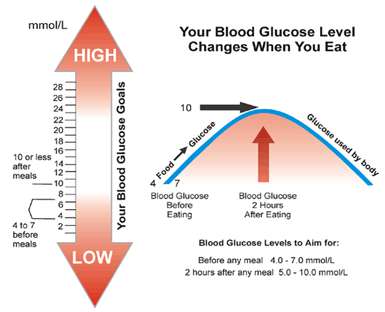The tendency of an organism or a cell to regulate its internal conditions, usually by a system of feedback controls, so as to stabilize health and functioning, regardless of the outside changing conditions.
Examples:
Body Temperature Homeostasis
In warm-blooded animals such as humans, body temperature must be maintained by various negative feedback reflex responses within the body.
Heat in the body is generated by the cellular respiration reaction, combining oxygen and ATP (a product of glucose) and creating heat, carbon dioxide and water.
The hypothalamus of the brain monitors body temperature and regulates that temperature by either increasing the rate of cellular respiration reactions, or decreasing the rate and otherwise causing heat loss from the skin.
If the body becomes cold, and more heat is needed, more ATP / glucose are “burned” to generate that heat.
If the body becomes too hot, the blood vessels near the skin dilate (open up) to allow more heat loss from the blood to the skin to the air, and perspiration from the skin causes evaporative cooling.
The body temperature must be maintained within a few degrees of the normal 98.6o F. If the core temperature falls below 90o or above 110o, death can result.
Glucose Level in Blood
Another example is glucose levels in blood. Glucose is the form of sugar that is found in blood and that provides energy for cellular respiration.
When glucose levels are too high in the blood, a hormone called insulin is secreted by the pancreas. Insulin stimulates the absorption of glucose by cells and the liver’s conversion of glucose into glycogen. Glycogen is a sugar that can be stored in the liver and blood cells.
As glucose levels decrease, less insulin is produced. When glucose levels are too low, another hormone called glucagons is produced, which in turn causes the liver to convert glycogen back to glucose











0 comments:
Post a Comment